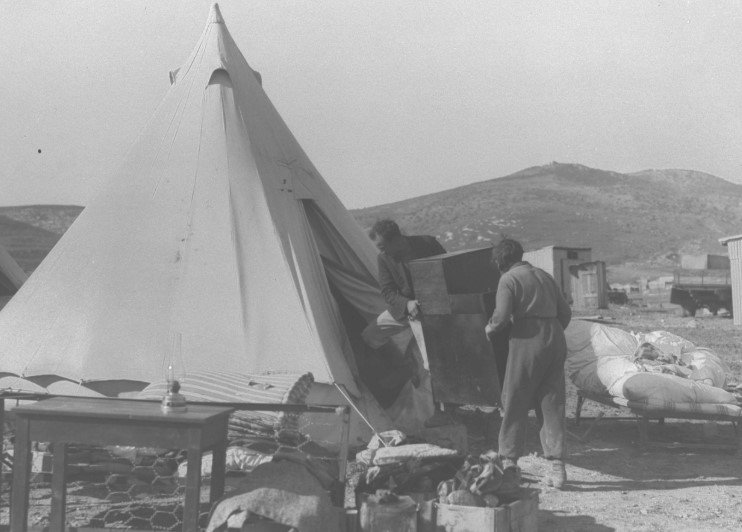In a surprising twist amid ongoing regional tensions, Elvira and Katya Grinstein, a young couple from Tel Aviv, relocated to Kibbutz Or HaNer near the Gaza border during the 2025 Iran conflict. They found greater peace and security in the fortified southern community, trading urban chaos for communal life that lets them sleep through rocket sirens.
The Spark of Change During Conflict
The Grinsteins’ story began in June 2025, when Iran’s missile strikes targeted central Israel, including Tel Aviv. With no safe room in their apartment and public shelters offering little comfort, the couple, parents to a toddler named Naomi, sought refuge in the south.
They stayed temporarily in Kibbutz Yad Mordechai, a move that flipped their perspective on safety. By the time the immediate fighting eased, they had fallen in love with the area’s resilience and quiet strength.

Financial pressures also played a role. Tel Aviv rents soared during the unrest, with safe-room equipped homes demanding premiums that strained their budget as a pastry chef and architect.
Discovering Home in Kibbutz Or HaNer
Kibbutz Or HaNer, located just a few kilometers from the Gaza border, offered the Grinsteins a fresh start. Founded in the 1950s, it has grown into a vibrant community of about 500 residents, blending agriculture with modern amenities.
Upon arriving, the couple rented a modest home with built-in fortifications, a stark contrast to their old city apartment. Elvira described the shift as liberating, noting how the kibbutz’s communal setup provided instant support networks.
Their daily life now includes shared meals in the dining hall and community events, fostering bonds that felt absent in bustling Tel Aviv. Katya, the architect, even contributes to local building projects aimed at enhancing resilience.
The kibbutz’s location, once seen as risky, now feels secure due to advanced defense systems installed after the 2023 October attacks. Recent data from Israel’s Central Bureau of Statistics shows a 15 percent rise in southern migrations in 2025, driven by similar stories.
Why the Border Feels Safer
Security stands out as the biggest draw for the Grinsteins. In Kibbutz Or HaNer, reinforced homes and rapid-response teams mean sirens rarely disrupt sleep, unlike in Tel Aviv where evacuations caused constant anxiety.
The couple points to the area’s heavy fortification, including Iron Dome batteries and underground shelters, which intercepted over 90 percent of threats during the Iran clashes, according to military reports.
Community spirit adds another layer of safety. Neighbors watch out for each other, creating a web of trust that Elvira says makes them feel protected in ways urban isolation never could.
Financially, the move saved them money. Their new rent is half of Tel Aviv’s average, allowing more focus on family and work without the grind of city expenses.
Here are key safety features that influenced their decision:
- Advanced alarm systems with 15-second warnings, far better than Tel Aviv’s variable times.
- On-site medical teams trained for emergencies, reducing response delays.
- Community patrols that integrate with national defense, offering round-the-clock vigilance.
Challenges of the New Life
Adapting to kibbutz living was not without hurdles. The Grinsteins missed Tel Aviv’s cultural scene at first, with fewer cafes and events in the rural south.
Naomi’s adjustment to a new preschool took time, but the kibbutz’s child-focused environment, with outdoor play areas and group activities, eased the transition.
They also face occasional rocket threats from Gaza, though these have dropped by 40 percent in 2025 compared to prior years, per defense ministry figures.
Despite these, the benefits outweigh the downsides. Katya notes how the slower pace has improved their mental health, especially after the stress of urban wartime living.
A Growing Trend in Israel’s South
The Grinsteins are part of a broader movement. In 2025, over 2,500 newcomers have joined Gaza border kibbutzim, drawn by idealism and practical perks, as reported in recent community surveys.
This influx follows the recovery from the 2023 attacks, with kibbutzim like Be’eri and Kfar Aza seeing returns and new faces. Experts attribute it to fortified infrastructure and government incentives, including tax breaks for southern residents.
Compare living costs and safety in this table:
| Aspect | Tel Aviv | Kibbutz Or HaNer |
|---|---|---|
| Average Rent | $2,500 per month | $1,200 per month |
| Safe Room Access | Often absent or costly | Standard in all homes |
| Community Support | Limited, individualistic | Strong, collective aid |
| Threat Interception Rate | 75% during peaks | 95% with local defenses |
Looking Ahead with Optimism
As regional tensions simmer, the Grinsteins remain committed to their new home. They encourage others to consider similar moves, highlighting how perceived danger zones can offer unexpected calm.
Their story underscores Israel’s evolving landscape, where border communities rebound stronger, blending tradition with modern resilience.
What do you think about this trend? Share your thoughts in the comments below or pass this article to friends who might find it inspiring.
